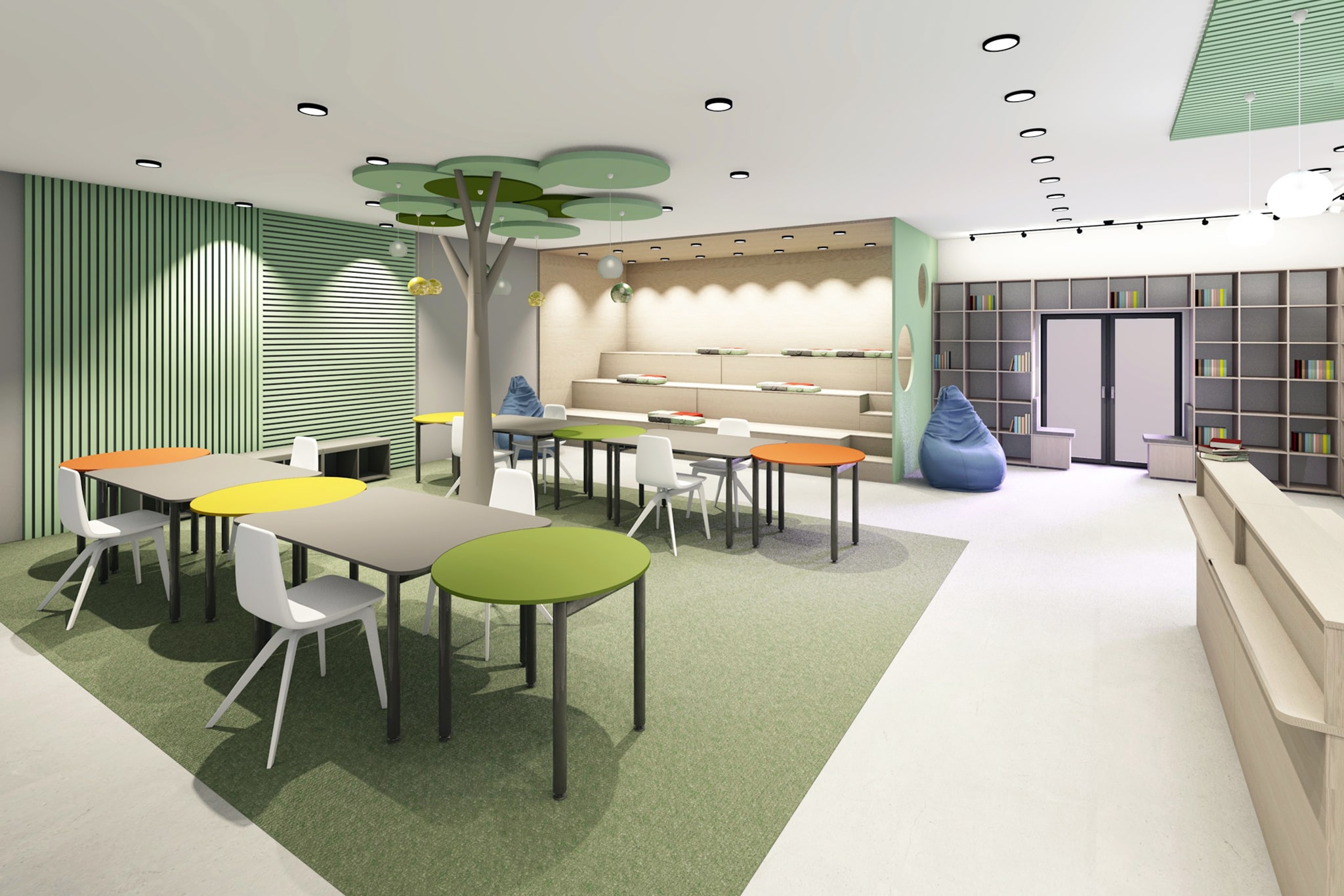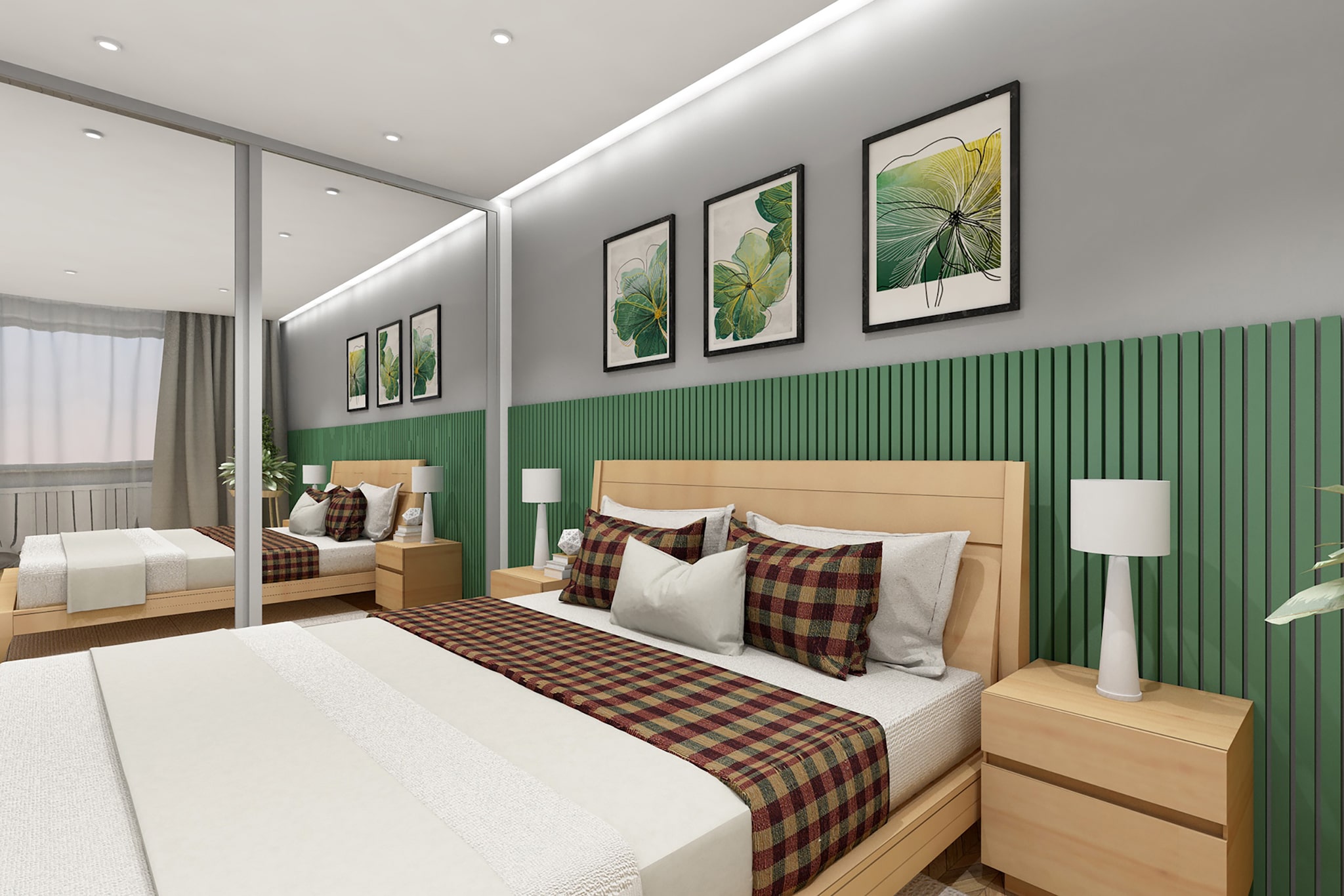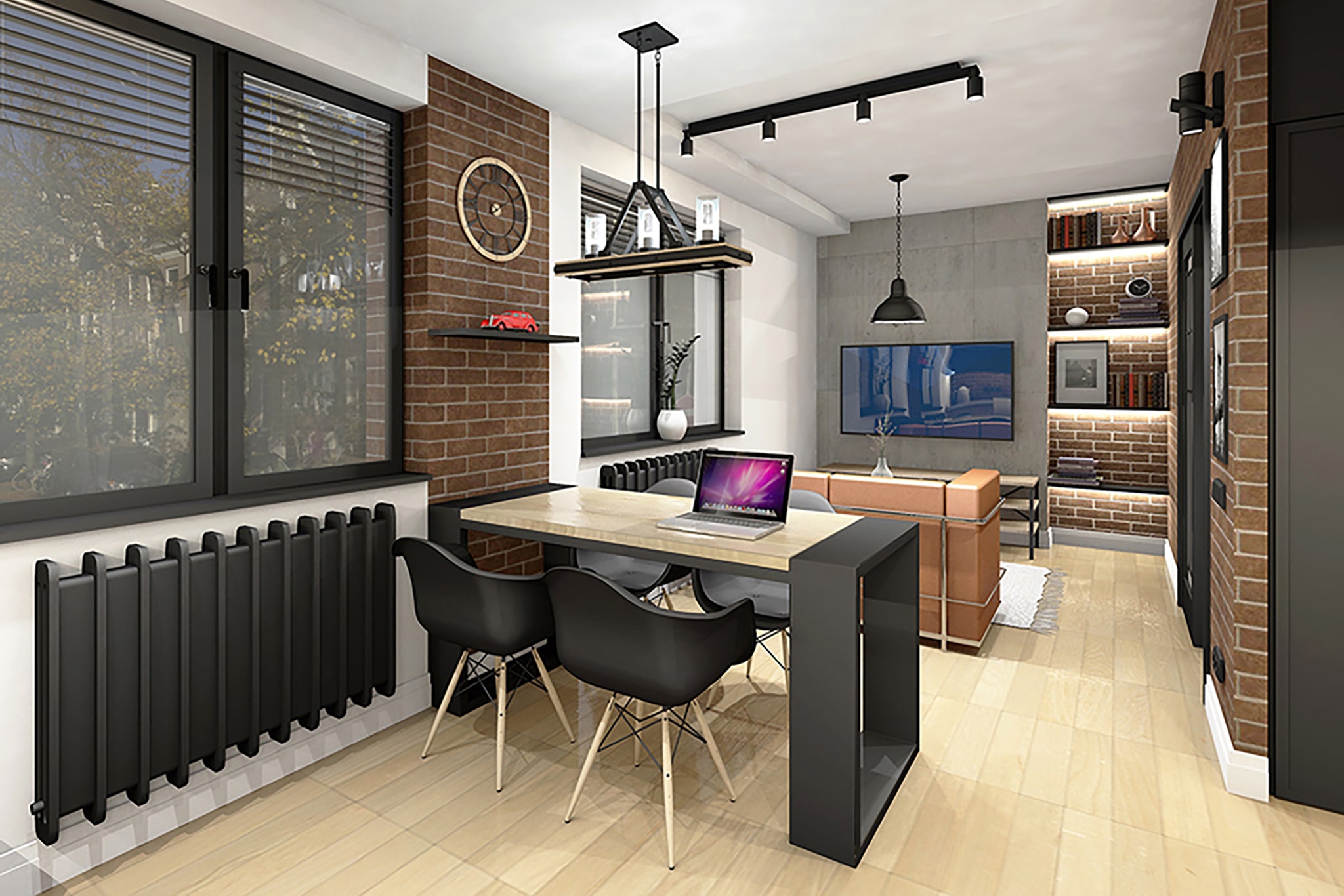Author supervision and design supervision are perhaps the most painful topics in the designer-client relationship.
Ideally, the design should first be fully developed with the selection of all finishing materials, furnishings, furniture, fittings and the creation of all technical drawings and specifications. Only then can the renovation and construction work begin. During the renovation, the drawings and specifications of the project are used by the builders to bring it to life.
However, life is far from perfect – and the work of an interior designer even further away. In practice, therefore, it often happens that the design work starts at the same time as the renovation and construction work and is carried out in parallel. This creates many problems and situations of misunderstanding between the client and the interior designer. In some cases, the client opts out of the author’s supervision services because they believe that, with a high-quality design at hand, they can handle the project themselves. In other cases, on the contrary, the designer himself does not want to deal with the practical side of his work, preferring to create and create interiors while sitting in a cosy office.
Let’s try to understand why this is the case and who really needs the designer’s supervision. To do this, we need to understand the aims and objectives of the parties involved.
When a client hires an interior designer, what does he expect from this collaboration? Firstly, he wants a unique and exclusive interior for his home, office or other premises, created exclusively for his needs and wishes. Secondly, he wants to minimise the cost of the redesign, having considered all the interior design possibilities, even at the design stage before the renovation and construction work begins. And thirdly, he wants to simplify the repair process, making it less costly in psychological and time terms. The client’s aim, therefore, is to implement the interior design project as accurately as possible on the site.
And it would be too primitive to think that when a designer gets down to work on a project, he is only interested in making money. Of course, interior design is a job, and creating wealth for oneself and one’s family is a priority. But beyond that, of course, the designer wants to make a reputation, a name for himself, to create an object that he can be proud of and that can take pride of place in his portfolio.
How can designer supervision help both parties?
In a narrow sense, designer supervision is the presence of an interior designer on site to monitor the builders’ work and compliance with the design. The designer has to check that all partition walls are installed in the right places, that all openings are made in accordance with the design, that the right finishing materials are used, that the right tiling, parquet flooring are used, that the media connection is done correctly, such as electrical sockets to electrical sockets and switches, vents, water and sewer connection.
However, in a broader sense, author’s supervision covers the full range of activities necessary for the full and successful completion of a project. This includes supervising the purchase of finishing materials, furniture, equipment and furnishings. It is also the resolution of ongoing issues that arise during the renovation and construction work that could not be resolved at the design stage. There are often quite a few such issues, especially when it comes to remodelling premises. Often they are connected to communications – plumbing, drainage, ventilation and so on.
However, in a broader sense, the designer’s supervision encompasses the whole range of activities necessary for the full and successful completion of a project. This includes controlling the purchase of finishing materials, furniture, equipment and furnishings. It is also the resolution of ongoing issues that arise during the renovation and construction work that could not be resolved at the design stage. Often such issues are quite numerous, especially when it comes to remodelling premises. Most often they are related to communications – plumbing, sewerage, ventilation and so on. Sometimes you suddenly find that a structure – for example, a wall or a beam – that was thought to be load-bearing and could not be touched, can be demolished. Or vice versa. All these questions have to be solved during the construction work. Certainly no one is better qualified to deal with this than the author of the project in question.
Further, it is often the case that certain materials, equipment, furniture, which are brought in to order, cannot be supplied or delivered on time. This can happen for a variety of reasons, ranging from logistical problems to a recall or even elimination of the manufacturer. In this case, it is very important to quickly find alternatives that suit the customer in terms of delivery time, price and quality, as well as matching the overall concept of the interior design project. Again, no one is likely to cope with this task better than the designer.
The designer has an image of the interior already finished in his mind. He does not need drawings or renderings – he knows what the end result should be. It is this image that the client buys, the embodied dream of the interior. It is this result, not the bare drawings and papers, that is the product the designer is selling. It is exactly the sum of the work done that will be judged on – the clients who will live or work in the interior, the visitors who will admire it and the potential clients who will consider the photos of the realised object in the designer’s portfolio.
Therefore, both parties should under no circumstances neglect author supervision. Furthermore, many designers who have been in business for 5-10 years confidently state that an interior design project alone without author supervision is almost useless. Its implementation is so different from the design that the designer does not want to sign off on the result, and for the client this design is partly a waste of money.
Some professionals go even further – they do not offer the client the project at all, but the whole range of services, right up to the decoration. And they carry the project all the way to turnkey condition. We won’t say that this is the ideal way of working together. However, in our opinion it is the most successful for the client.
What mistakes the client makes
Firstly, of course, it is a big mistake to refuse designer supervision altogether. When a client refuses to provide design supervision, they do not fully understand the scale of the process. Designer supervision is the ‘dark side’ of an interior designer’s work. Overseeing the work of construction workers, controlling the timing of deliveries and the quality of goods and dealing with unexpected problems is a difficult and thankless task. It involves a lot of phone calls, driving around and sometimes swearing. On every project, regardless of its quality, someone has to do the job. In my opinion, it makes much more sense to have it done by a professional – a designer hired specifically for this purpose, preferably the author of the project, thus saving the client time, energy and nerves.
In the case of author supervision, the client often does not have enough confidence in the designer. This is particularly the case when a technical fault occurs. When something goes wrong and everyone starts looking for someone to blame, it is difficult for the client, as the person most interested in the outcome, to remain calm and reasonable. Understandably, if the builders say that the designer is to blame for the problem, it is easy to check. Builders are usually men, serious and experienced. And the designer may be seen as a free artist, far removed from technical matters. However, we should not jump to hasty conclusions. It is quite possible that the designer is more or less experienced in technical matters and has more than one or two completed projects under his belt. The client in such a situation should calmly listen to all sides, keeping a cool head. It may make sense to involve an external consultant. The most important thing is not to accuse anyone, because in most cases all situations and problems can be solved if there is creativity and a willingness to cooperate.
In addition, the client should understand the difference between designer supervision and technical supervision. The designer is not an engineer, he is not responsible for whether the workmen follow the technological processes, whether the radiators are connected correctly, whether the drains are installed correctly and so on. Design supervision is a design compliance check, not a quality check. Of course, if the designer sees a clear breach of technology or clearly poor quality – it is his job to inform the client. But it is unfair to blame the designer for not being able to spot the builders’ technical errors, because that is not his job.
Very often, the client rushes the designer by requesting separate drawings for the project. In this way, the drawings arrive at the construction site one at a time, instead of being filed in one design folder.
Sometimes drawings are not delivered on time, are incomplete or incomplete at the client’s request in order to speed up the process. However, in the end, this only harms the work process as different versions and inaccuracies are created.
And perhaps the worst nightmare for a designer is when, during the course of the author’s supervision, the client wants to make significant changes to the design. For example, to change the layout or, worst of all, the colour scheme. It would seem so, because what is there to say – make the walls a different colour. However, since an interior is a harmonious combination of individual elements into a whole, changing one thing entails a complete imbalance. You may end up with a sofa upholstery that doesn’t match the walls, and a new upholstery that doesn’t match the curtains. You will have to make a lot of adjustments, perhaps literally from scratch, to choose certain materials. And the result will still be unpredictable. In short, once the design is agreed, it should not be changed significantly.
What mistakes does the designer make?
The designer follows the client, to the detriment of the production process, and changes the order of design or finishing work. For example, the client is often forgiven for planning electrical sockets at an early stage of the project, as this is one of the first works on site and therefore one of the first necessary drawings.
However, this can lead to very unpleasant mistakes if, at the time the electrical sockets are placed, the furniture has not yet been chosen. Dimensions can vary considerably from model to model. It is therefore possible that the switch is behind the chest of drawers and the socket behind the head unit. This should be kept in mind and the client should be made aware of this possibility.
Often the designer is too soft in his communication with the client – he is at every beck and call, does not defend his opinion, and adopts the position of ‘any whim for your money’. This is understandable, because, as they say, the client is always right. However, care must be taken here. Sometimes the client himself, seeing the result, says – you should have done as you said … Why are you not convinced? In this respect, one must exercise moderation and sometimes not be afraid to insist.
A designer often takes a lot of his knowledge for granted, especially when he has a lot of experience. And it may not occur to him that the client does not have this knowledge. You need to keep your hand on the pulse of the project and – at the risk of being intrusive – take an interest in how it develops and advise on implementation.
I had a similar case recently where a client ordered a door from a manufacturer and had it fitted by his own builders. I tried to dissuade him from this, but he decided to do it anyway. In the end, unfortunately, the doors were not installed successfully, with several errors.
The builders claimed it was a design defect and the manufacturer’s fault. The manufacturer claimed it was a problem of faulty installation. I told the customer that unfortunately this is usually the case, that we should always try to have the manufacturer do it and install it to avoid such problems. To which the customer wondered – why didn’t you tell him this earlier? Yes, I did suggest that the door should be installed by the manufacturer, but I did not warn him of the possible consequences.
Of course, the price of the author’s supervision also becomes an obstacle. The client already has a detailed and high-quality design in hand, for which a certain amount of money has been paid. To pay the designer more money or even more for some process that is not entirely clear, he obviously does not want to. The designer also quite reasonably does not want to do this hard, nerve-wracking and thankless work for little or no money. In my opinion, the ideal solution would be a price for the project including author supervision, but for obvious reasons this is not always possible. Perhaps the designer should offer the client different options for collaboration at the author supervision stage, so that the client chooses the scheme of work and payment that is most acceptable to them.
Designers often compare their projects to babies that are born in agony and not easily released. In such a case, it is important to remember the saying “Not he who breeds – but he who nurtures”. If the design process is like childbirth and pregnancy, then the designer’s supervision is like raising a ‘baby’. Only by giving it the attention, patience and care it deserves will we get a result we can be proud of.
(C) Natalia Mitina,
Koncepcija, Latvia







